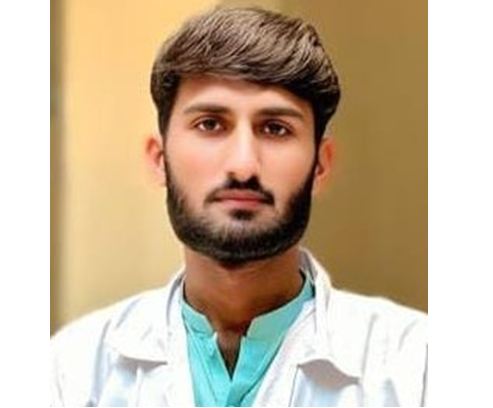Ali Haider
Human Papillomavirus (HPV) represents one of the most prevalent sexually transmitted infections worldwide, and has gained significant attention due to its strong association with a wide range of benign and malignant diseases. Belonging to the Papillomaviridae family, HPV comprises more than 200 genotypes, of which a subset is categorized as high-risk types because of their established role in the development of cervical cancer, as well as malignancies of the anogenital tract and oropharynx. Low-risk HPV types mainly cause benign conditions such as genital warts, while high-risk strains can lead to cervical cancer by disrupting cell cycle regulation. Cervical cancer remains a major global health issue, particularly in low- and middle-income countries with limited access to vaccination and screening programs. Prophylactic vaccines targeting common high-risk HPV types have shown great success in reducing HPV-related diseases, though challenges in accessibility and awareness persist. In 2020, the WHO launched a global strategy aiming for 90% HPV vaccination coverage in girls by age 15 by 2030. Effective control of cervical cancer requires vaccination, screening, early treatment, and comprehensive care strategies.For individuals aged 9–14 years, two doses are sufficient, while those aged 15–45 years require three doses for complete protection. The HPV vaccine prevents genital warts and significantly reduces the risk of cervical, anal, vaginal, vulvar, penile, and many oropharyngeal cancers. These vaccines are made using recombinant technology to produce purified virus-like particles for each targeted HPV type; they do not contain viral DNA, making them inactive and incapable of causing infection. Currently, three vaccines are widely available: Gardasil 4v (quadrivalent), Gardasil 9v (nonavalent), both produced by Merck & Co. using Saccharomyces cerevisiae, and Cervarix 2v (bivalent), produced by GlaxoSmithKline using a baculovirus expression system. Clinical trials and post-marketing surveillance across multiple regions confirm that all three vaccines are safe, although rare adverse effects have been reported, including anaphylaxis in approximately 1.7 cases per million doses. Investigations into post-vaccination syndromes linked to adjuvants, such as autoimmune/inflammatory syndrome induced by adjuvants (ASIA), suggest an incidence of 3.6 cases per 100,000 doses. While a few deaths have been reported after vaccination, a direct causal link to the vaccine or its adjuvants remains uncertain. Overall, HPV vaccines are considered highly safe and represent the most effective preventive measure, though they are not recommended for pregnant women due to limited evidence from clinical trials. Importantly, vaccination does not provide protection against all HPV types, which makes regular cervical cancer screening essential. Current guidelines recommend Pap smear testing every three years for women aged 21–29 years, while women aged 30–65 years should undergo either HPV testing alone or combined HPV/Pap co-testing every five years. Women over 65 years who have consistently had negative results may discontinue screening, though continued testing is necessary for those with abnormal or uncertain results. Whereas Pap tests detect precancerous and cancerous cellular changes, HPV tests identify the presence of the virus in cervical tissue, thereby complementing early detection strategies.
The World Health Organization (WHO) has established comprehensive recommendations for the prevention and control of Human Papillomavirus (HPV) infection, with the primary objective of reducing the global burden of cervical cancer and other HPV-related diseases. WHO advises the inclusion of HPV vaccination in national immunization programs as part of a broader cervical cancer elimination strategy, emphasizing early vaccination of both girls and boys between the ages of 9 and 14 years, prior to the onset of sexual activity, as the most effective preventive measure These recommendations reflect a comprehensive approach that combines immunization, screening, treatment, and health education, aiming not only to reduce morbidity and mortality but also to achieve equitable access to preventive healthcare across different regions of the world.
The public health impact of widespread and well-implemented HPV vaccination programs has been increasingly evident in recent years, with robust data demonstrating substantial reductions in cervical cancer incidence and precancerous lesions, significant population-level benefits via herd immunity, notable economic savings, and justification for gender-neutral vaccination policies; for example, a modelling study in Kazakhstan showed that introducing nine-valent HPV vaccination for both boys and girls aged 11-12 years (80% coverage in girls, 50% in boys) could avert nearly 97,714 cases of HPV-related diseases over 100 years compared with four-valent vaccination in a gender-neutral strategy, with 8,527 deaths prevented and treatment cost savings of about 14.7 million US..Ethiopia and other low- and middle-income settings show that high HPV vaccine uptake in adolescent girls dramatically lowers rates of high-grade cervical intraepithelial neoplasia (CIN2+) and persistent infections of oncogenic HPV types, leading to anticipated strong declines in invasive cervical cancer many years later. Moreover, in regions where both sexes are vaccinated, indirect protection (herd immunity) has led to measurable decreases in HPV transmission even among the unvaccinated, reducing prevalence of vaccine‐type HPV strains in the population, decreasing incidence of genital warts and non-cervical HPV-related cancers (anal, penile, oropharyngeal) among men as shown by large cohort studies. China’s major metropolitan centers (Beijing, Shanghai, Guangzhou), comparing female-only versus gender-neutral vaccination strategies, show that gender‐neutral programs avert more HPV-related cases and deaths, and are cost-effective within reasonable thresholds, given reductions in treatment burden across multiple HPV-associated outcomes. Vaccination is recommended to be administered before sexual debut, generally in the age range of 9 to 14 years, when immunogenicity is highest; some programs also allow catch-up vaccination to older adolescents or young adults depending on national policy. Initiatives such as those supported by Gavi (the Vaccine Alliance) aim to improve this: for example, Gavi support has helped introduce HPV vaccination programmes in many lower-income countries, increasing coverage, providing funding for vaccine purchase, helping adopt simplified dosing schedules (one or two dose regimens where evidence permits), and emphasizing multi-age cohort catch-ups in intro years. Recent research also supports that two doses for younger adolescents are nearly non-inferior in immune response compared to three doses, and that single-dose schedules may hold promise particularly in resource-constrained settings, although longer-term follow-up is ongoing. In addition, gender-neutral vaccination (including males) is expanding in many countries, which increases herd immunity and offers protection against genital warts and non-cervical HPV-related cancers. Despite these advances, overall vaccine coverage remains well below WHO elimination targets in many settings; inequities persist in both access and uptake, particularly among LMICs, rural areas, and marginalized populations.
Despite clear benefits, HPV vaccination programs worldwide face substantial challenges, particularly in overcoming vaccine hesitancy, increasing coverage rates, and implementing sustainable programs in low- and middle-income countries (LMICs). For example, in LMICs, lack of knowledge regarding the cancer-preventive role of the HPV vaccine is strongly associated with lower acceptance; sociocultural stigma attached to the idea of a vaccine for a sexually transmitted infection often suppresses parental and community conversations about vaccination. Without addressing these challenges, many LMICs struggle to meet WHO’s ambitious targets (such as 90% of girls vaccinated by 15 years), meaning that despite scientific advances, practical, social, and economic obstacles continue to limit the scale and impact of HPV vaccination on reducing cervical cancer and other HPV-related disease burdens globally.
Ali Haider
Medical laboratory technology
University of Okara

















